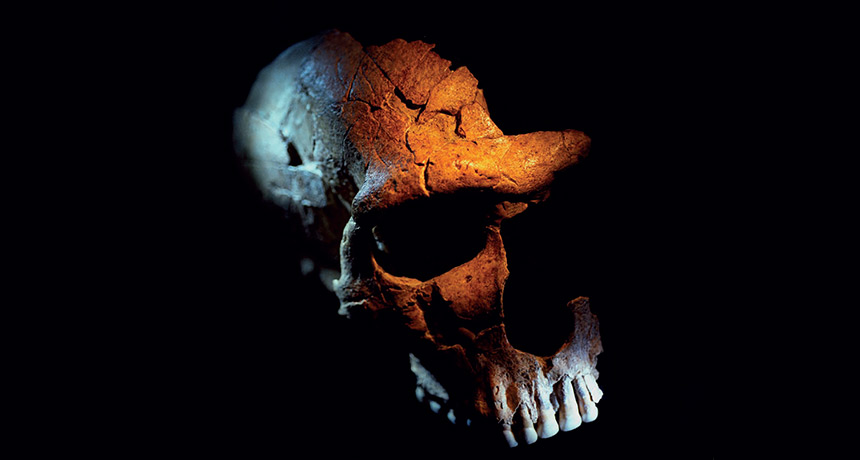Skull damage suggests Neandertals led no more violent lives than humans
Some 200 skulls show similar rates of damage between humans and our evolutionary cousins

ANCIENT KNOCKS A Western European Neandertal skull from around 40,000 years ago includes a healed bone injury, indicated by two arrows.
Claire Artemyz